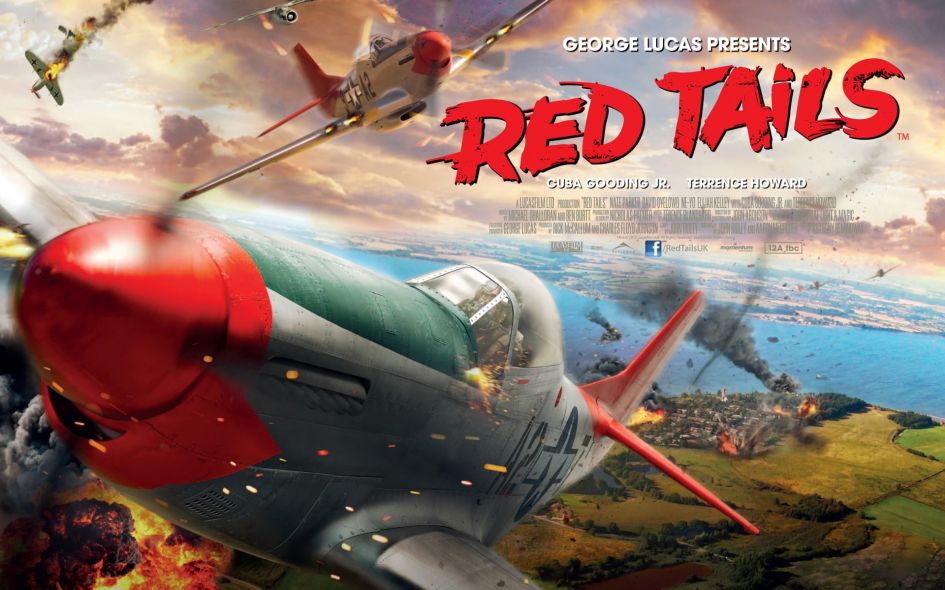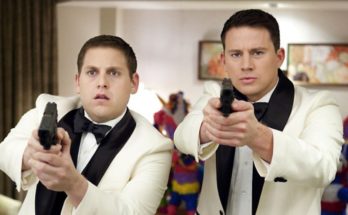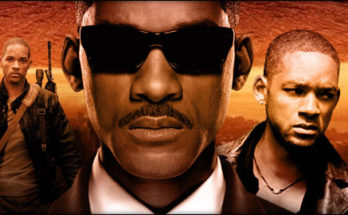Lucas’ Historical Flop
Red Tails is caught in a fatal tug-of-war between two narrative approaches. On one side, we have serious drama; the film is an historical account of the Tuskegee Airmen, the first ever group of African American fighter pilots to serve the United States military during World War II. On the other side, we have a stylistic homage; it’s a generic war movie rife with threadbare clichés, some lightweight, some melodramatic, all of it dated and hopelessly predictable. Perhaps if someone had come to a decision as to which film they wanted to make, there might have been something to get out of it. Had I been executive producer George Lucas, who invested an estimated $100 million of his own money into its budget and promotion, I would have opted for a more serious approach.
That’s because the real life story of the Airmen is far more compelling than the filmmakers give it credit for. During World War II, many African Americans were still subject to degrading Jim Crow laws, and the U.S. military was racially segregated. It took just over twenty years of civil rights advocacy for Congress to pass a law amending the rules that prevented funding for the training of black military pilots. That was in 1939, two years before the formation of the Tuskegee program and five years before the all-black 332nd Fighter Group would be sent overseas to join the 99th Squadron in escorting the Fifteenth Air Force’s bombing raids across Europe. Even then, the War Department stipulated that blacks be put into separate military units and that they be staffed by white officers, who usually prevented them from advancing.
Not much of this background information is explored in Red Tails. It takes place in 1944, after the program had been established. This provides precious little context for audiences unfamiliar with the history of the Airmen. What the filmmakers do explore has been filtered through a highly conventional lens, many scenes looking, sounding, and advancing as if they had been lifted straight from a 1950s war movie. At that time, Hollywood would freely indulge in contrivances and stereotypical characters, including the unyielding superior officers, the hotshot young privates, and the poor sons of bitches that would die after revealing their plans to return home to their women. This movie provides us with variations of all of the above. The dialogue, especially during the early combat scenes, was written in the cornball style of a Saturday matinee serial – a mixture of obvious puns, harmless goading, and preachy sermons.
When the issue of racism finally does work its way into the plot, it will immediately be obvious how much it has been simplified and sanitized. Bryan Cranston, for example, plays Col. William Mortamus, an inflexible white bigot who, naturally, speaks in a Southern drawl. He will on a few occasions butt heads with A.J. Bullard (Terrence Howard), a black colonel who correctly points out that his men deserve better than rusty hand-me-down planes. He delivers every line as if giving a child an ultimatum. And then there are the scenes with the Airmen stationed in Italy. The white pilots refuse to give them the time of day until the Airmen do their stuff during the bombing raids; at that point, the white men make the most miraculous and sudden of turnarounds, going so far as to salute the Airmen in broad daylight, inviting them for a round of drinks at the local bar (which they had previously been denied access to), and even shake their hands. If problems were this easy to solve, the world would indeed be a much better place.
Several characters are given their own dramatic situations. There’s friction between best friends Martin “Easy” Julian (Nate Parker) and Joe “Lightning” Little (David Oyelowo). The former likes to do everything according to protocol and masks his resentment of his unseen but nonetheless demanding father with alcohol. The latter is an ace pilot who takes foolish risks, on land and in the air. There’s the kid everyone calls Junior, although he would much prefer the nickname Ray Gun (Tristan Wilds); a bit inexperienced, he will eventually find himself in a POW camp and participating in a great escape with the white inmates. There’s Major Emanuel Stance (Cuba Gooding, Jr.), always with a pipe in his mouth, always having an occasion to deliver a firm but inspirational speech. The filmmakers even find time for a soppy romance between Lightning and an Italian woman named Sofia (Daniela Ruah), the circumstances of which would be phony even within the pages of a dime store romance novel. Never mind the fact that they can express their love without knowing the languages they each speak.
For George Lucas, Red Tails was an odyssey, originally conceived of in 1988 but repeatedly postponed due to multiple script rewrites, many attached directors, and its rejection by every major studio because of it’s all-black cast, which they claimed would have made it impossible to market oversees. It’s a project he obviously cared about from the start. And yet… this is the best he could give us? I can give him credit for his trademark display of special effects; the aerial dogfight sequences, some edited in the style of a Star Wars space battle, are nothing short of spectacular. But all the digital wizardry in the world can’t compensate for a screenplay that relies on an inferior plot and one-dimensional characters. How tragic that a very real and very interesting chapter in American history has been marginalized by bad filmmaking.



